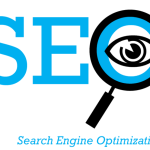How to Develop an IT Strategy Framework For Your Business
Technology changes rapidly, and businesses that hope to stay ahead of the curve must keep up with the latest trends. If your company has IT needs but no strategy, you’re likely struggling to meet your goals.
Having a clear IT strategy allows you to address your organization’s current technological needs effectively. It would be best to focus on where your organization is headed and how technology will allow you to advance.
You can learn how to develop an IT strategy framework correctly by taking note of some essential principles. How to create an IT strategy that’s right for your organization? Let’s explore what you should know.
Understand Your Business Goals
Before starting to build your IT strategy framework, it’s essential to learn about your company’s business goals. It would be best to talk to key stakeholders to understand your company’s vision, purpose, and strategic goals. This step solidifies your IT plan by clarifying how technology can be used strategically to help your business succeed.
Assess Current State
Assessing your organization’s current IT landscape is a critical step. It will provide a clear snapshot of your existing technological capabilities and limitations. This assessment evaluates your IT infrastructure, systems, applications, and data management practices.
This review should also look at the skills and capabilities of your IT team. Know your IT team’s strengths, areas of knowledge, and any skill gaps that might need to be filled through training or hires. Also, think about how your current technology solutions can be expanded and changed to meet the needs of your business as it grows and changes.
Involve Stakeholders
By involving key stakeholders, you can ensure that your IT strategy fits perfectly with the needs and goals of your company. Executives, area heads, employees, and IT staff are all examples of these people.
Use workshops, interviews, and group meetings to discover their ideas, points of view, and problems with technology. Getting people from different levels and groups involved can teach you how technology affects other parts of your business. This collaborative method leads to a more well-rounded IT strategy. It gives stakeholders a sense of ownership and buy-in, which makes it more likely that the strategy will be put into place successfully.
Define IT Principles
When clear IT principles are set, these values guide the organization’s technology choices and projects. These rules should come from your company’s overall values and align with your business goals.
For example, if security is a core value, one of your IT principles could be to put strong protection measures at the top of all tech projects. These principles give you a framework for making decisions and tell the rest of the company what your IT strategy is based on.
Identify Initiatives and Projects
It would be best to break down your strategic goals into concrete efforts and projects to make your IT strategy work. Every business should have a clear focus, set of goals, and expected results.
For example, if one of your strategy goals is to improve the customer experience, one of your initiatives could be to set up a customer relationship management (CRM) system to make interactions more efficient and get more information.
Allocate Resources
Once you know which initiatives and projects will make up your IT strategy’s core, giving them the tools they need to run smoothly is essential. This means figuring out the budget, people, and technology investments that each project needs.
Work closely with your finance and HR teams to ensure the resources you’re giving out are realistic and in line with what your business can afford.
Develop a Roadmap
After deciding how to divide your IT resources, make a thorough roadmap showing the order and timing of your IT projects over a set time. This plan shows clearly how each of your initiatives helps you reach your strategic goals. Set clear goals, outputs, and dependencies for each job to keep the way forward clear.
The plan is a way to keep stakeholders updated on the direction and progress of your IT strategy. Update the plan often to reflect changes, tweaks, and new ideas that come up as projects are carried out.
Consider Technology Trends
When making your IT strategy framework, staying on top of new technology trends that could affect your industry and company is important. Keep an eye on what’s happening with AI, data analytics, cloud computing, hacking, and other areas. Consider how you can use these trends to improve your business processes, improve the customer experience, and encourage new ideas.
Monitor and Adjust
Putting your IT plan into action is an ongoing process that must be watched and changed constantly. Check each project’s work against its goals and milestones regularly.
Collect feedback from partners, project teams, and end users to find problems, things that went well, and places to improve. Use this feedback to make smart choices about changing your action plan, redistributing resources, or fine-tuning your actions.
If you have problems that need specialized help or advice, you might want to call this IT Consulting company. Their knowledge and experience can help you navigate complex technological landscapes and ensure your plan is carried out well.
Communicate the Strategy
Your IT support framework will only work if you can communicate well. After you’ve made and improved your strategy, ensure it gets to everyone with a stake in your business. Make a detailed plan for how you will tell people about the process, its goals, and why it is essential.
Sculpt Your Business Future with an Innovative IT Strategy Framework
An IT strategy framework lets your business use technology to reach its organizational goals. If you use this framework as part of your IT plan, you will know exactly where your business codevelopers are going. Start by making goals that can be measured and make a clear plan for how to reach them.
What are you waiting for? Get tech support for your business today!
We hope this article was helpful to you. If you enjoyed it, check out our blog for more great articles.











